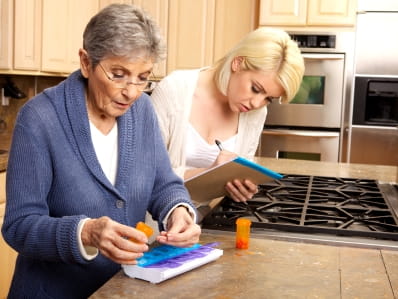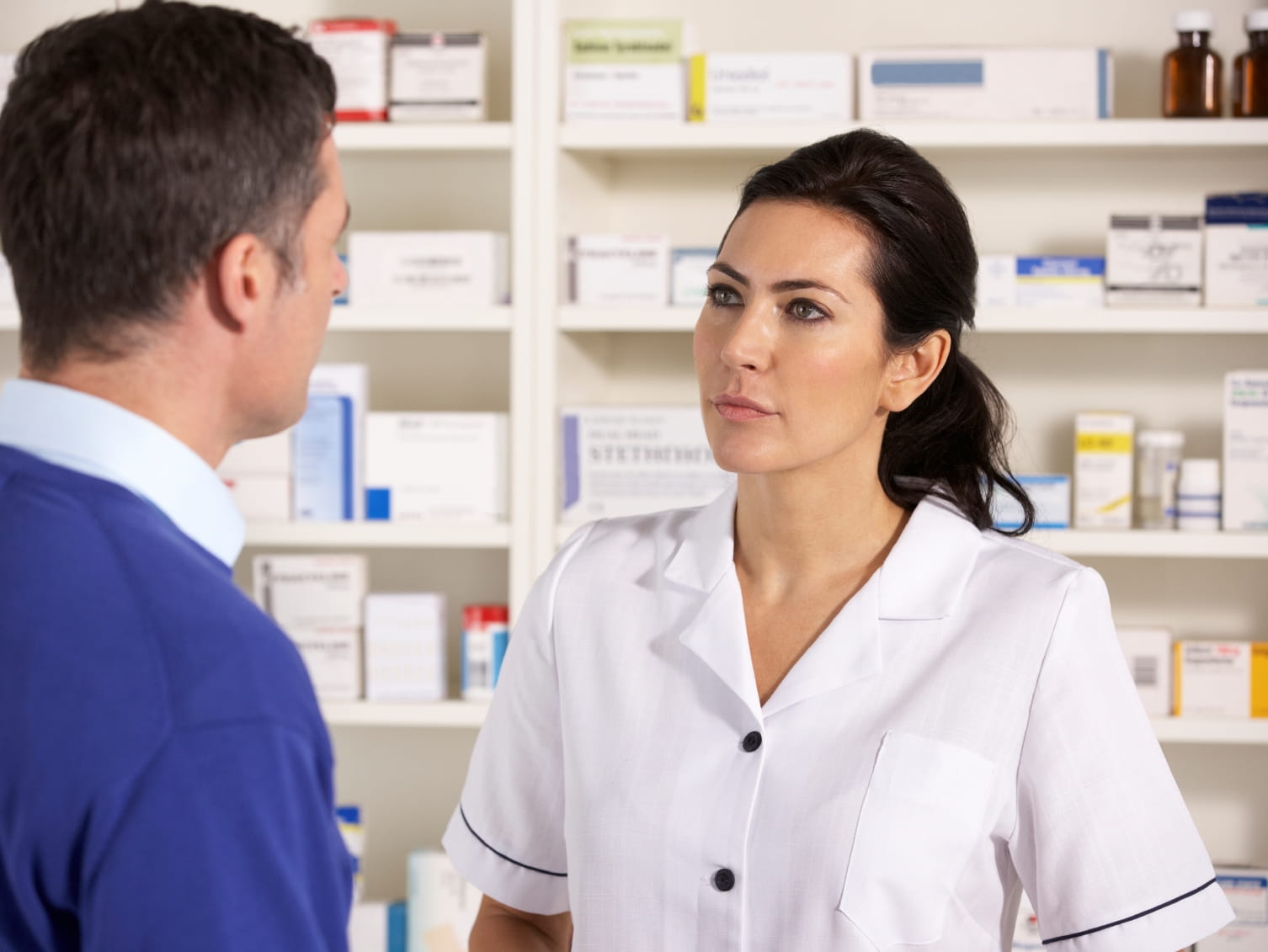Medication Errors: Double Dosing

The Bottom Line
A common medication error is taking—or giving—a double dose. For some medicines, a double dose can cause significant problems. Examples include medicines for high blood pressure, ADHD, depression, and diabetes.

What is a double dose?
As the term implies, a double dose occurs when someone takes or receives a second dose of a medication close to the time of a scheduled dose. Examples of how double dosing can occur include:
- Someone forgets about having already taken a dose and takes a second.
- Medication is being given by more than 1 person, and they do not communicate.
- A previous dose was missed, and the patient takes a double dose to “catch up.”
How dangerous is double dosing?
A double dose of some medications might not be a major problem, while doubling up on others can have potentially serious outcomes. Medications already being taken at or very near to their maximum dosage have the least room for error. Long-acting medications also present a greater risk for harm when double dosed.
The danger of double dosing can also be compounded by other medications a patient might be taking. A study found that adults over 65 years of age take an average of 4 medications, and that about half of adults over 65 meet the definition of polypharmacy (5 or more medications).
Medications of concern
Some common classes of medications that can be very serious when double dosed include heart medications (such as for blood pressure), medications used to treat attention deficit/hyperactivity disorder (ADHD), diabetes medications, medications for psychiatric conditions (especially depression), and pain medications.
Preventing double dosing
Anyone who gives or takes medication on a schedule needs a system for keeping track. Consider following these tips:
- Decide who will be giving each dose of medicine. This will prevent the patient from accidentally getting duplicate medication doses from multiple caregivers.
- Keep a medication log. While this is a bit of extra trouble, it can be useful when more than 1 person cares for a patient. The log should stay with the medicine. Every time someone gives a dose, it should be marked in the log.
- Set an alarm for once-daily medications. This will help you take or give medications at the correct time every day.
- Consider using a pill organizer. Many kinds are available, including child-resistant ones and ones that can organize up to a week’s medication. By looking at the compartments, you can see if a particular dose of medicine was taken.
- Talk to your pharmacist and primary healthcare provider. They can help you figure out a system that should work for you.
I think I took a double dose of my medication. What should I do?
If you make a mistake with medicines, use the webPOISONCONTROL online tool for guidance or call Poison Control right away at 1-800-222-1222. Both are free, confidential, and available for you 24/7/365.
Rose Ann Gould Soloway, RN, BSN, MSEd, DABAT emerita
Clinical Toxicologist
Revised William G. Troutman, PharmD
Professor of Pharmacy Emeritus
Poisoned?
Call 1-800-222-1222 or
Prevention Tips
- Decide who will give each dose of medicine to a patient.
- Keep a log: mark it each time someone gives or takes a dose.
- Use a pill organizer. If children are around, make sure it is child-resistant.
- Talk to your pharmacist about the best way for you to keep track of your medicine.
This Really Happened
A 19-year-old woman took a double dose of her Wellbutrin XL (also known as bupropion, it is a drug used as an antidepressant and for smoking cessation). The amount she took, 600 mg, has been known to cause seizures in some people. Also, because she took a long-acting form of bupropion, she was at risk of seizures for many hours to come.
Poison Control referred her to the nearest emergency room. An IV was placed in case she needed medicine to control seizures. She was monitored for seizures and other harmful effects of overdose. She did not develop any symptoms. After many hours of observation, she was able to return home.
For More Information
20 tips to help prevent medical errors: patient fact sheet. US Agency for Healthcare Research and Quality. Reviewed November 2020. Accessed March 15, 2025.
Consumermedsafety.org. Institute for Safe Medication Practices. Accessed March 15, 2025.
References
Correia MS, Whitehead E, Cantrell FL, Lasoff DR, Minns AB. A 10-year review of single medication double-dose ingestions in the nation's largest poison control system. Clin Toxicol (Phila). 2019;57(1):31-35.
Keenan M, Alabi P, Alsakha A, Marraffa J, Wojcik S, Burke S. Does the time between doses in an unintentional double dose bupropion exposure affect the incidence of adverse effects? A retrospective cohort study. Clin Toxicol (Phila). 2025;63(2):127-132.
Pan S, Li S, Jiang S, et al. Trends in number and appropriateness of prescription medication utilization among community-dwelling older adults in the United States: 2011-2020. J Gerontol A Biol Sci Med Sci. 2024;79(7):glae108.
Vaida AJ. The Institute for Safe Medication Practices and poison control centers: collaborating to prevent medication errors and unintentional poisonings. J Med Toxicol. 2015;11(2):262-264.
Poisoned?
Call 1-800-222-1222 or
Prevention Tips
- Decide who will give each dose of medicine to a patient.
- Keep a log: mark it each time someone gives or takes a dose.
- Use a pill organizer. If children are around, make sure it is child-resistant.
- Talk to your pharmacist about the best way for you to keep track of your medicine.
This Really Happened
A 19-year-old woman took a double dose of her Wellbutrin XL (also known as bupropion, it is a drug used as an antidepressant and for smoking cessation). The amount she took, 600 mg, has been known to cause seizures in some people. Also, because she took a long-acting form of bupropion, she was at risk of seizures for many hours to come.
Poison Control referred her to the nearest emergency room. An IV was placed in case she needed medicine to control seizures. She was monitored for seizures and other harmful effects of overdose. She did not develop any symptoms. After many hours of observation, she was able to return home.
